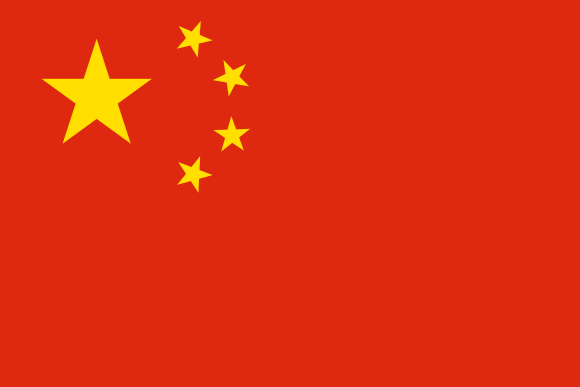كوريا الجنوبية
“History tells us that no nation or people can flourish in isolation. Cultural exchange beyond narrow political boundaries stimulates intelligent curiosity and creative imagination. The meeting of the East and the West by means of the Silk Roads was an important period in history because two major portions of the globe began to share their respective genius at that time. This sharing was a driving force for cultural progress. The Silk Roads, therefore, should be viewed not only as avenues for the exchange of discrete cultural traits but also as channels for the exchange of symbolic meanings.” (Kim, 1991)
The global domain of the cultural exchange through the ancient land Silk Roads was expanded as far as the Korean peninsula, that is the east end of the Asiatic Continent. It is not so difficult today to see the trace of the cultural exchange through both the land and maritime Silk Roads in Korean cultural heritages. Among them, the evidences of the exchange with the numerous foreign cultures which were introduced through the oasis routes of Central Asia desert area, the steppe routes of southern Siberia and the maritime Silk Roads have been clearly found. For example, the various kinds of archaeological materials excavated from the ancient tombs in Gyeongju – the capital of Silla Kingdom (57 B.C. ~ 935 A.D.) in Korea – indicate that there was the frequent exchange between Silla and other worlds.
Those excavated material evidences include a lot of ancient foreign goods imported from many other parts of the world – in particular, the West Asia region. The Roman-style glass ware is one of the concrete archaeological objects which show the exchange and trade between Silla and the Western world. Many kinds of glass ware were excavated from the ancient tombs (dated 5th ~ 6th century) of the Silla Kingdom in Gyeongju, Korea. Scholars say that those pieces of glass ware are thought to be produced in the Mediterranean coast in 4th ~ 5th century, and supplied by the merchants of the countries bordering on Western China through both the land and the maritime routes to Silla. Another kind of material evidences is the ancient jewels, which were made in Tashkent and Samarkand, and traded by the same group of merchants mentioned above. Flavoring, herbs and spices were also ones of important products imported to Silla far from the Arabian Peninsula and the Western world. The Persian carpet and the rugs made of wool were introduced to Silla people by the Silk Roads too. It is, therefore, noted that the cultural exchange of the Silla Kingdom was not limited to Asia, but was expanded as far as Islamic and European areas.
“The culture was already spreading more rapidly than we imagine even 1,000 years ago. The more the cultures meet and contact with each other, the more they exchange their influences and develop.” (Lee, 2000)
Historians say that it would only take one month or so for the Buddhist monks of Silla to obtain Buddhist scriptures newly introduced in or via China. According to academic research, it would not take more than six months for the hairpin as commercial goods, which ladies in Istanbul (Constantinople) of Turkey used, to reach the capital Gyeongju of Silla Kingdom for sale. These examples demonstrate that the cultural exchange and trade among the continents were being made more quickly in practice at that time than people normally think. This fact suggests that the Silla Kingdom also had direct routes of exchange with other worlds although a number of indirect trading routes had existed – for example, such indirect routes for silk and Silla’s local products – from and to East Asia, Central Asia, and West Asia and Europe through many oases.
Historical materials also present the records of the cultural exchange in the ancient time. Some Islamic old books on history and geography indicate the Silla Kingdom, and read that Islamic people travelled or went to Silla. Recorded in those books are the location, natural environment, and products of Silla. Such old books included 20 volumes written by 17 Islamic scholars between 9th and 15th century. Particularly, Ibn Khurdhadbih was the first Islamic scholar who wrote about the Islamic people residing in the Silla Kingdom. Another scholar, Al-Mas'udi wrote that Iraqi people went to the Korean Peninsula, and lived there. Korean old books of history also say that Islamic people lived in group at Gaeseong – the capital of Goryeo Dynasty (918 ~ 1392 A.D.) in Korea. Thus, these historical facts prove that Korea and other worlds have been carrying out the exchange in many aspects as well as in culture quite closely since the ancient time through the Silk Roads.
It is never a coincidence nor an exceptional phenomenon that Persian-style metallic ancient objects and Roman-style glass ware were discovered in many historical sites in Gyeongju, Korea. The Silk Roads were the ways where the cultures of East and West comprehensively interchanged. The ancient societies were not ever paralyzed through that interchange. Their continuous change and development were being accomplished. The Korean Peninsula was, therefore, connected by the ring of the large-scale network called the ‘Silk Roads.’
The culture of the Silla Kingdom can be characterized as international and global at that time because the various other cultural elements were harmonized in it. Gyeongju the capital of Silla was the very place where all cultures of the Eurasian continent had spread to the edge of the Korean Peninsula through the Silk Roads. The Silla Kingdom of Korea was an open-minded society to all kinds of cultures. Gyeongju was one of the globalized lively cities exchanging with other worlds by the Silk Roads both land and maritime. Silla well shows the truth of the proposition that the culture could develop as more creative as it would be mixed with other ones.
References include:
JOO, Bo-don. (2000) The Formation and Characteristic of Silla Culture. In: A Search for the Light of the East – Silk Road and Korean Culture. (Gyeongju: Gyeongju World Culture Expo 2000 Organizing Committee).
KIM, Yong-beom. (2010) Reading the Culture of the Silk Road by History. (Daejeon: Boseong).
KIM, Young-shik. (1991) Address of the Secretary-General, Korean National Commission for UNESCO. In: Korean Culture and the Silk Roads. (Seoul: Korean National Commission for UNESCO).
KWON, Young-pil. (2008) Art of the Silk Road and Korea to Be Newly Viewed. In: The History and Culture of the Silk Road (Jeju National Museum Cultural Studies Series 7). (Seoul: Seo-gyeong-mun-hwa-sa).
LEE, Hee-soo. (2000) Cultural Exchange Between Silla and West Asia. In: A Search for the Light of the East – Silk Road and Korean Culture. (Gyeongju: Gyeongju World Culture Expo 2000 Organizing Committee).
MIN, Byung-Hoon. (2015) Silk Road and Gyeongju. (Seoul: Tong-cheon-mun-hwa-sa).





